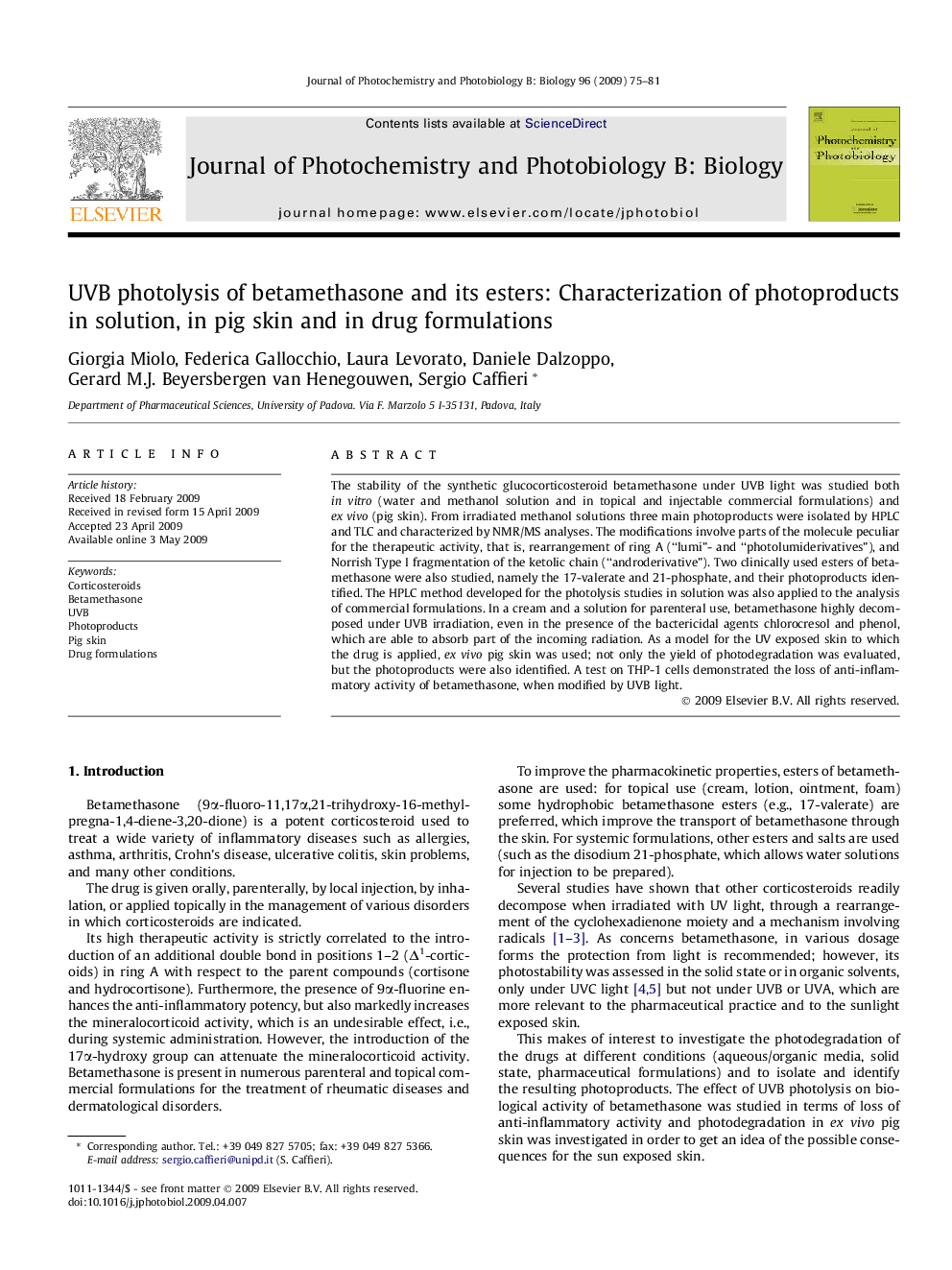| Article ID | Journal | Published Year | Pages | File Type |
|---|---|---|---|---|
| 29830 | Journal of Photochemistry and Photobiology B: Biology | 2009 | 7 Pages |
The stability of the synthetic glucocorticosteroid betamethasone under UVB light was studied both in vitro (water and methanol solution and in topical and injectable commercial formulations) and ex vivo (pig skin). From irradiated methanol solutions three main photoproducts were isolated by HPLC and TLC and characterized by NMR/MS analyses. The modifications involve parts of the molecule peculiar for the therapeutic activity, that is, rearrangement of ring A (“lumi”- and “photolumiderivatives”), and Norrish Type I fragmentation of the ketolic chain (“androderivative”). Two clinically used esters of betamethasone were also studied, namely the 17-valerate and 21-phosphate, and their photoproducts identified. The HPLC method developed for the photolysis studies in solution was also applied to the analysis of commercial formulations. In a cream and a solution for parenteral use, betamethasone highly decomposed under UVB irradiation, even in the presence of the bactericidal agents chlorocresol and phenol, which are able to absorb part of the incoming radiation. As a model for the UV exposed skin to which the drug is applied, ex vivo pig skin was used; not only the yield of photodegradation was evaluated, but the photoproducts were also identified. A test on THP-1 cells demonstrated the loss of anti-inflammatory activity of betamethasone, when modified by UVB light.
